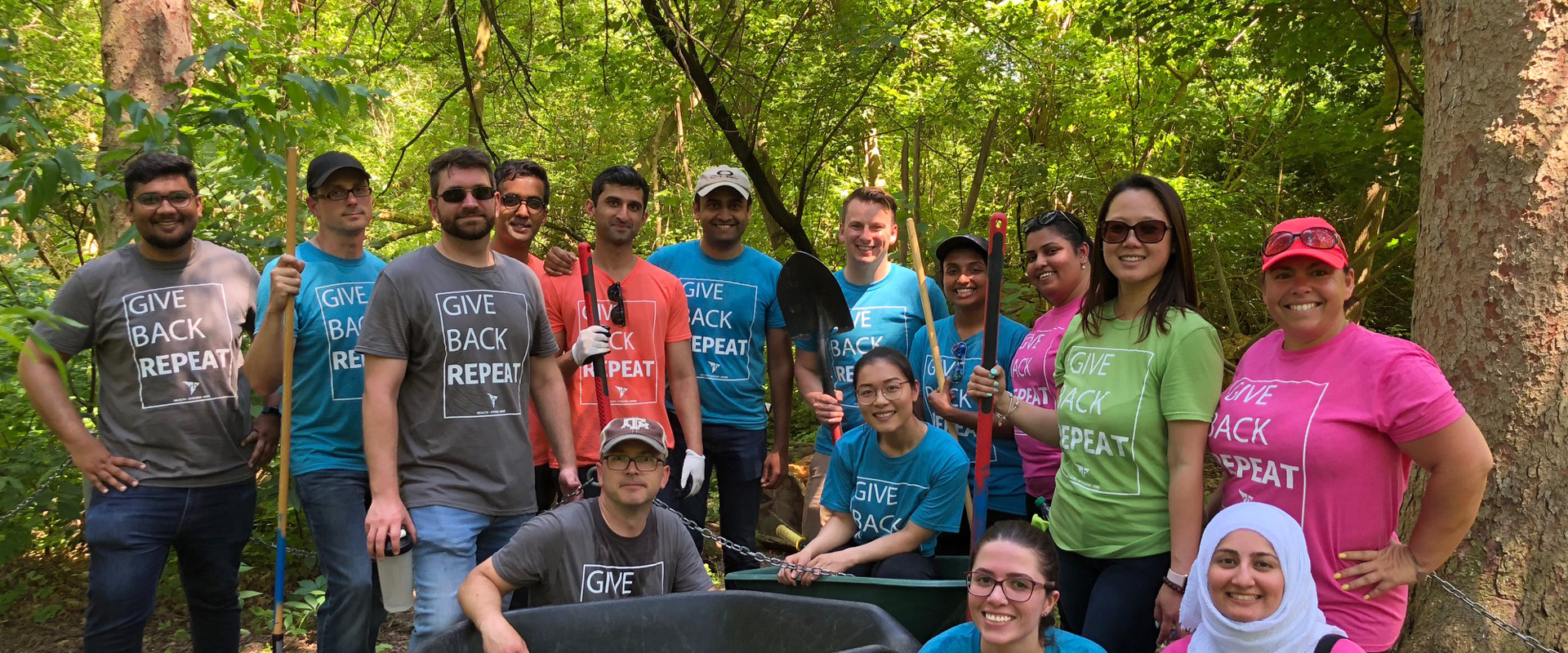
Natural Areas Conservation
The Riverwood Conservancy’s conservation programs work to protect, improve, and restore Riverwood’s natural spaces: forest, tablelands, meadows, ravines, wetlands, creeks, and the Credit River. Our work ensures the beauty and ecological importance of our area is maintained for future generations. Staff and volunteers, together with the City of Mississauga, Credit Valley Conservation, and partnering groups, work to: improve and protect wildlife and native plant habitat; maintain public trails; manage invasive plants; plant native trees, shrubs, and wildflowers; and conduct field research to better understand local ecosystems and inform management practices.
Ecological challenges we address
Some of the challenges facing Riverwood’s forest and wetland ecosystem include natural habitat degradation and loss of native biodiversity by invasive plants. Some of the invasive plants we work to remove include garlic mustard, common and glossy buckthorn, purple loosestrife, phragmites, Manitoba maple, Norway maple, Tatarian honeysuckle, and dog-strangling vine. Forest insects such as the emerald ash borer and gypsy moth are also present at Riverwood and constitute significant threats to the vitality of our forests.
Through the exceptional efforts of environmentally-minded volunteers, we work to eliminate these threats through our stewardship practices. Where we remove invasive trees and shrubs, we restore the area by planting native trees and shrubs that provide quality wildlife habitat and increase overall biodiversity.
Tackling garlic mustard
Riverwood’s most pervasive and threatening non-native plant, garlic mustard, has been documented in the area for over 30 years. During that time, it has altered much of our wildlife habitat and drastically reduced the biodiversity in our local environment.
Garlic mustard is not directly harmful to humans, but it creates a myriad of problems for the health and biodiversity of our ecosystems. It regularly seeds itself for up to five years, and creates chemicals that prevent other plants from thriving. Our natural areas, and even our wildlife, are under threat from the negative impacts of garlic mustard.
Since 2014, our conservation staff and volunteers have made a concerted effort to take back the forest understory, and restore it to a more hospitable environment for our native plants and wildlife. Tonnes of the invasive species have been removed over the years. In fact, if you stacked all the bags we’ve filled with garlic mustard, they would reach the top of the Empire State Building!
The work of the Invasive Species Task Force has made for healthier ecosystems and wildlife habitats, and more scenic and more enjoyable paths all around Riverwood.
Pollinator Paradise
Located on the east side of the Chappell House lawn, our Pollinator Paradise supports declining pollinator populations; beautifies a previously empty portion of grass; creates a peaceful place to sit and contemplate nature; and serves as an educational resource for visiting school classes, special needs programs, and community events. This 120-square metre garden is full of native plants specifically chosen for the food and habitat they provide for bees, butterflies, and other pollinators.
We’re grateful for the support of the TD Friends of the Environment Foundation and the Family of Douglas Campbell, the hands-on work contributed by our dedicated volunteers, and the participation of the City of Mississauga and Credit Valley Conservation in bringing this project to life.
Field research
Riverwood is abound with opportunities to conduct field work and create practical reports that can be used to inform our natural areas management. Previous research topics have included wetland management plans, white pine health studies, invasive species inventories, and beaver population and impact studies.
If you’re a university, college, or graduate student or have recently graduated from an environmental program and would like to conduct an independent research project at Riverwood, please contact us.
Volunteering for conservation activities
You have the power to create healthy habitats for wildlife, and conditions to ensure the lasting survival of native plants and trees. If you want to get involved in conservation activities at Riverwood through tree planting, invasive species removal, and trail maintenance, you can learn more about our volunteer opportunities here.
Group volunteering
Conservation activities at Riverwood are safe, fun, and meaningful for corporate, community, and school groups, and are an excellent team-building exercise that creates strong connections. Volunteer groups help us make significant improvements to the health and beauty our natural space. Learn more about our Conservation Crew group outings here.




